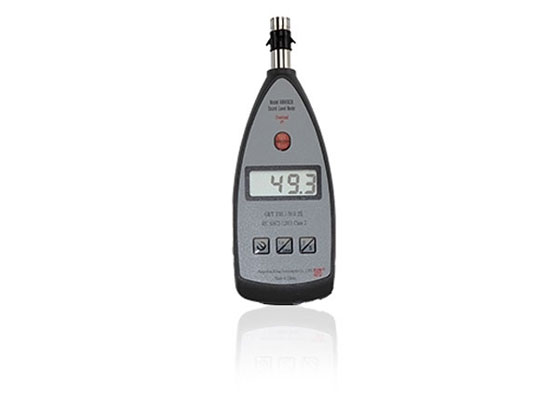How to Choose a Sound Level Meter?
Noise monitoring is the monitoring of the sound and its sources that interfere with people's study, work and life. These include: noise monitoring in urban functional areas, road traffic noise monitoring, regional environmental noise monitoring, and noise source monitoring. The noise monitoring results analyze the current situation and changing trend of noise pollution, and also provide basic data for the planning management and comprehensive improvement of noise pollution.
With the development of electronic technology, especially large-scale integrated circuit and computer technology, frequency weighting, detector and filter circuit in sound level meter are all realized by digital signal processing technology instead of analog circuit. This not only makes the circuit simpler and wider dynamic range, but also greatly improves the function and stability, especially for real-time spectrum analysis. A sound level meter is an instrument that measures the sound pressure level and sound level according to a certain frequency weighting and time weighting. It is the most commonly used instrument in acoustic measurement, which can approximate the noise level of industrial noise, traffic noise, environmental noise and living noise according to the characteristics of human hearing. It can be applied to the measurement of environmental noise, mechanical and electrical product noise, traffic noise, architectural acoustics and electro-acoustics.

Sound level meter purchase points
1. Spectrum analysis function
In order to perform spectrum analysis on noise, the spectrum analysis function needs to be selected. Octave and 1/3-octave spectral analysis are the most used in acoustic measurements. In the past, spectrum analysis was realized by analog filters, but now most of them use digital technology to conduct real-time spectrum analysis through digital filters.
2. Accuracy class
Instrument Accuracy Class: Class 1 and Class 2.
3. Price
When purchasing a sound level meter, you need to consider the price range of the product. The price of a sound level meter depends on many factors, including functionality, accuracy rating, number of channels, storage capacity, and more.
4. Calibration
In the process of use, it is necessary to use a sound calibrator for sound calibration. The sound calibrator is often used as a supporting instrument of the sound level meter and becomes an integral part of the instrument. There are two kinds of sound calibrators: piston sounder and sound level calibrator. The piston sounder produces 250Hz, 124dB sound pressure level, and the accuracy level is 1 or 0; the sound level calibrator produces 1000Hz, 94dB sound pressure level, and the accuracy Level 2 or 1. Class 1 should be calibrated with a class 1 or class 0 sound calibrator, and class 2 should be calibrated with a class 2 or class 1 sound calibrator.
5. Measuring range
The measurement range sometimes needs to consider its upper measurement limit in order to measure high sound pressure levels, such as 140dB, or even more than 160dB; sometimes it needs to consider its lower measurement limit, in order to measure low sound pressure levels, such as below 20dB, usually the measurement of sound level meters The range is in the 25dB to 130dB range.
6. Number of channels
The general sound level meter has only 1 channel and only measures 1 channel sound pressure level. Sometimes it is necessary to measure multi-channel sound pressure level, and it is necessary to use multi-channel. For example, the measurement of sound intensity level requires 2 channels, and the measurement of sound power level requires more channels. The multi-channel sound level meter greatly expands the use of the instrument.
7. Function
The measurement function is the most important indicator, it not only determines the application scope of the instrument, but also has the greatest relationship with the price of the instrument. According to the type of the measured signal, for the steady-state noise signal, the function of this instrument only needs to measure the instantaneous sound pressure level; for the measurement of the non-steady-state signal, it is generally required to measure the time-averaged sound level or the equivalent sound level. For analysis, choose a noise spectrum analyzer.
8. Interface
The current sound level meters generally contain RS232, USB and other interfaces, which are used to connect to micro-printers or computers, and users can choose according to the test needs.
A sound level meter is an instrument that measures the sound pressure level or sound level of sound, and is the most basic and most commonly used instrument in acoustic (noise) measurement. It is used for the measurement of environmental, machine, vehicle and other kinds of noise, and it can also be used for the measurement of electro-acoustics, architectural acoustics, etc. ATO offers class 1 and class 2 sound level meter, the measurement range can be selected from 20 ~ 143 dB, 40 ~ 130 dB, 45 ~ 160 dB.

